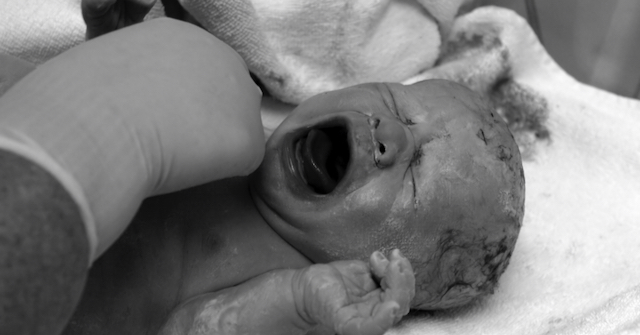 By Carol Gray, LMT, CST, RPYT, ERYT-200
By Carol Gray, LMT, CST, RPYT, ERYT-200
The Truth About Birth
First a word or two about birth physiology: Labor is almost universally painful for birthing parents and sometimes painful for babies. One of the ways we cope with pain is to produce beta-endorphin. Beta-endorphin is an opiate-like brain chemical – the same one responsible for the so-called runner’s high. It reduces pain.
What Happens as Labor Progresses?
In a typical labor, the pain for the birthing parent increases over time. As the pain increases, the production of beta-endorphin also increases. Birthing parents and babies both produce beta-endorphin. In birth, the babies produce a little and the parents produce a lot. Research has established that beta-endorphin produced by the parent freely passes to the baby through the placenta.
What Happens at the Moment of Birth?
At the moment of birth the pain of labor suddenly and dramatically decreases for the birthing parent. Parents and babies are flooded with endorphins that, with little to no pain, cause euphoria.
Recreating a Peak Experience
We know that endorphins create a state of dependence. After a medically undisturbed birth, the parent and baby will repeatedly seek to recreate that initial high of birth euphoria with close skin to skin contact. Endorphins and oxytocin (the love hormone) are released during each breastfeeding session to facilitate this process. We know that babies need this contact to survive and develop normally.
Endogenous Pain Relief for Babies
Sometimes babies are hurt in the birth process. It’s obvious when they come out with swelling, bruises or broken bones. Sometimes they appear frightened or shocked. In that moment they are supposed to rely on an extra boost of endorphins from their parents.
The Real Truth
Parents who have epidurals experience little to no pain in their labors. If parents experience little to no pain, they produce little to no beta-endorphin. When parents produce little to no beta-endorphin, their babies have more painful births. This pain could be extreme. This pain can interfere with bonding. We have no idea what the lifetime effects of this could be.
Some people say they think the medication in epidurals goes directly to the baby and makes them sleepy. What those people don’t realize is that the medication in epidurals is mostly a stimulant — not a drug that would make anyone sleepy. It is delivered into an area of mostly fatty tissue near the parent’s spinal cord. The drug bathes the spinal nerve roots and causes a loss of sensation in the areas of the body supplied by those nerves. It does not go into the mother’s or the baby’s blood circulation.
I, too, have seen babies (who are born to parents who have opted for an epidural) seem to behaviorally “check out” after they are born. I believe they are leaving their bodies because they are in pain.
I know this is sobering information.
Prenatal yoga is birth preparation
You may be able to avoid an epidural or need it for less time if you prepare in advance. The MamaSpace Yoga Method is designed to help babies find more ideal positions for birth. This is optimal fetal positioning. When babies aren’t stuck, labor is more likely to begin in a timely manner and progress more efficiently. This can reduce your need for anesthesia in childbirth and possible reduce your risk for a cesarean birth. When you practice prenatal yoga regularly, you have the opportunity, in a low-stakes safe environment, to explore what it’s like to do hard things with your body and mind and experience how your own personal coping style can help. When the going gets tough, you’ll reach for what you know. I strongly encourage you to know yourself through your prenatal yoga practice. Pregnancy is an awesome time to grow your coping skill repertoire. This can increase your confidence during labor. Practice with us. We’re here for you.
About Carol Gray
 Carol is the founder and owner of MamaSpace Yoga. She has been a therapeutic bodyworker in private practice for over 30 years. She specializes in Craniosacral Therapy for pregnant and postpartum people and infants. Carol has spent years developing hands-on techniques to enhance the mobility in pregnant bodies including the bony pelvis, the abdominal organs, the support structures and lower segment of the uterus. She is proud to have pioneered the integration of this gentle manual therapy into prenatal care, the birth place and postpartum care for birthing parents and babies. The goal is to give babies more room to develop, grow and get born. Her specially-designed yoga classes have grown naturally from the roots of bodywork and yoga.
Carol is the founder and owner of MamaSpace Yoga. She has been a therapeutic bodyworker in private practice for over 30 years. She specializes in Craniosacral Therapy for pregnant and postpartum people and infants. Carol has spent years developing hands-on techniques to enhance the mobility in pregnant bodies including the bony pelvis, the abdominal organs, the support structures and lower segment of the uterus. She is proud to have pioneered the integration of this gentle manual therapy into prenatal care, the birth place and postpartum care for birthing parents and babies. The goal is to give babies more room to develop, grow and get born. Her specially-designed yoga classes have grown naturally from the roots of bodywork and yoga.
Carol has dedicated her professional life to supporting expectant and new families by promoting gentle aware birth. She has attended births for over 35 years – at first as a doula and from 2000 to 2012 as a midwife. She has since retired from attending births in order to focus on practicing and teaching CST and prenatal yoga. Her many years as a birth worker have forever changed her and her worldview. Those experiences remain an integral part of who she is as a therapist and teacher.
Carol is the founder and director of the The Carol Gray Center for CST Studies®. She teaches high-quality, small group classes that are appropriate for bodyworkers, birth attendants and other health professionals. She is approved by the National Certification Board for Therapeutic Massage and Bodywork (NCBTMB) as a continuing education approved provider.

